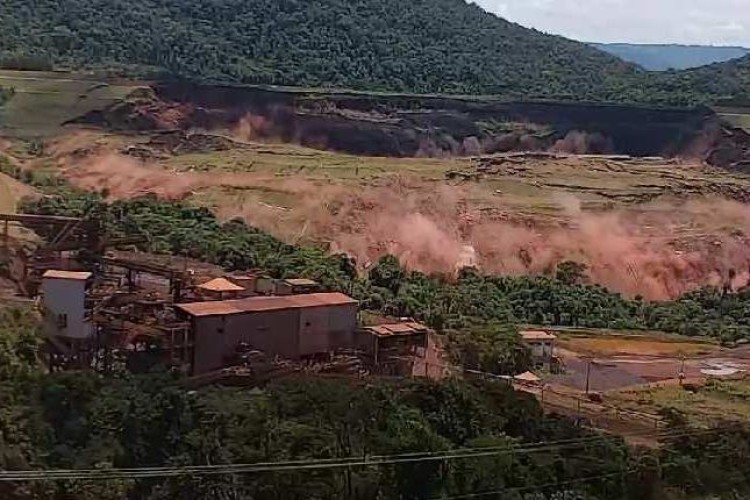Dam I at the Córrego do Feijão Mine in Brumadinho, Minas Gerais, suffered a sudden failure on 25 January, resulting in a catastrophic mudflow that travelled rapidly downstream. Almost 300 people were killed.
A four-person expert panel has now published an 80-page technical report on the collapse. The investigators were able to make use of high-quality video images that provide insight into the failure mechanism. They found that the failure and resulting flow slide was the result of flow liquefaction within the tailings in the dam. identified six aspects of the dam’s history that led to the instability:
- a design that resulted in a steep upstream constructed slope;
- water management within the tailings impoundment that at times allowed ponded water to get close to the crest of the dam, resulting in the deposition of weak tailings near the crest;
- a setback in the design that pushed the upper portions of the slope over weaker fine tailings;
- a lack of significant internal drainage that resulted in a persistently high water level in the dam, particularly in the toe region;
- high iron content, resulting in heavy tailings with bonding between particles. This bonding created stiff tailings that were potentially very brittle if triggered to become undrained; and
- high and intense regional wet season rainfall that can result in significant loss of suction, producing a small loss of strength in the unsaturated materials above the water level.

These factors created a dam that was composed of mostly loose, saturated, heavy, and brittle tailings that had high shear stresses within the downstream slope. As a result, the dam was only marginally stable and was close to failure in undrained conditions. Laboratory testing showed that the amount of strain required to trigger strength loss could be very small, especially in the weaker tailings. These were the main components that made flow liquefaction possible.
The panel concluded that the sudden strength loss and resulting failure of the marginally stable dam were due to a critical combination of ongoing internal strains due to creep, and a strength reduction due to loss of suction in the unsaturated zone caused by the intense rainfall towards the end of 2018.
The internal strains and strength reduction in the unsaturated zone reached a critical level that resulted in the failure on 25 January 2019.
Got a story? Email news@theconstructionindex.co.uk



.gif)
